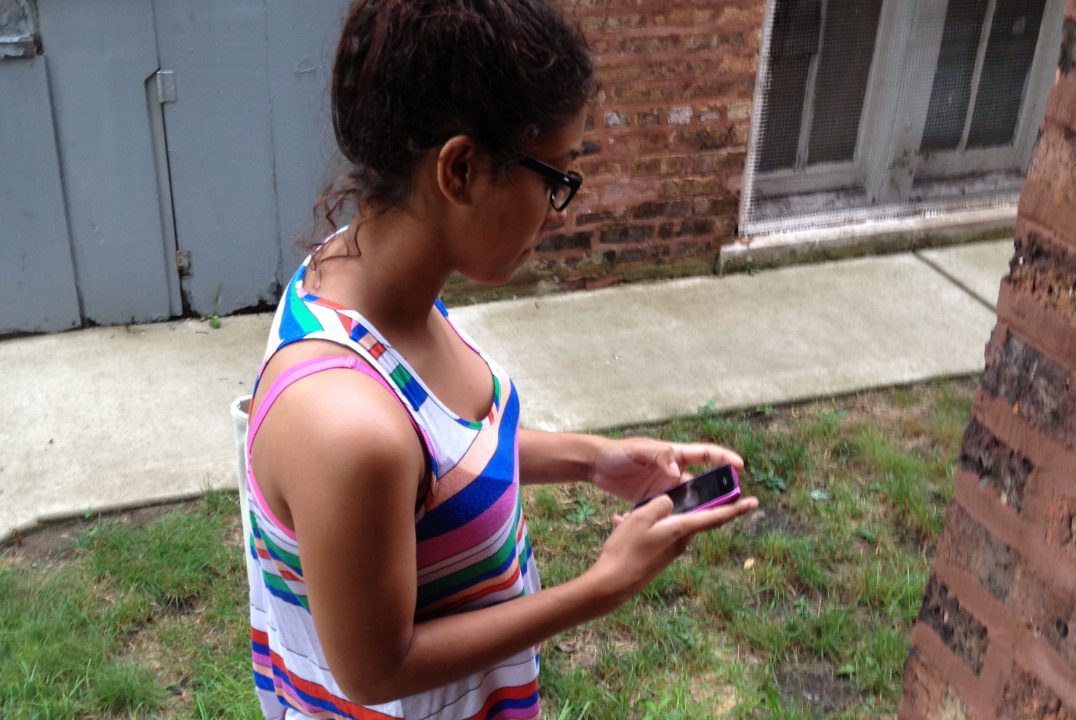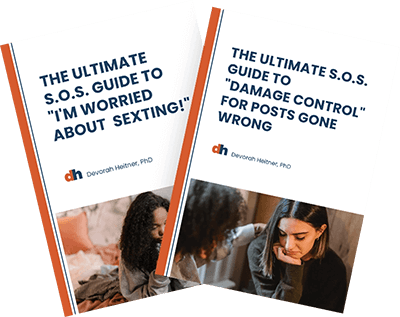 As technologies evolve, so do the rules of etiquette. While you might be confident about teaching your kids etiquette in the real world, you may feel that it’s more of a challenge in the online world. It takes some time to learn the new rules, and they seem to change every time a new platform emerges.
As technologies evolve, so do the rules of etiquette. While you might be confident about teaching your kids etiquette in the real world, you may feel that it’s more of a challenge in the online world. It takes some time to learn the new rules, and they seem to change every time a new platform emerges.
As I mentioned in my last post, our kids are more isolated from adult communication today because so much of our peer communication takes place in a private, not public, setting. Email or text messages are sent and received out of “public” view, leaving fewer opportunities for kids to get etiquette cues from you—or other adults.
There’s another layer of complexity, too. Just because you exist in social spheres like your kids do, it doesn’t mean that the rules are the same for them as they are for you. So what can you do to learn the rules, together with your child?
Shrinking the scope
Where do kids learn digital etiquette? Though social media is a worldwide community (Twitter, Facebook, Instagram), kids are getting their social training in much smaller communities (home, their friends, in the classroom). In many ways, social media at home or in-class blogs are ideal spaces to learn about social media etiquette, and can serve as great training wheels. It offers an accepting environment where a knowledgeable adult can help kids understand when they make communication errors, and help kids make repairs when they offend one another or miss important cues about how to respond. A community where people interact both online and offline is a great way to learn the new rules of digital etiquette.
“Friending” is a huge pressure for kids. This pressure can lead them into making poor decisions. For instances, they often feel that they have to agree to “follow” or “like” something, even if they don’t. Kids I’ve interviewed say that they are really difficult and uncomfortable to NOT accept a Friend Request or to ask a peer to take down (or untag) a photo.
What can you do to help? To open the conversation, you can say, “I got a Facebook request today from someone I went to high school with—but we barely even knew each other.” This gives you the opportunity to let your kids know that it’s OK to ignore the request—that they have a choice in the matter. To be more prescriptive, try giving them an informal limit on the number of people that can follow them initially. Instagram works well as a model for this. This will teach them how to be selective about their social sphere.
Sharing social circles
Surprise! Your networks are already connected. You have to remember—and respect—the ways that your own network indirectly corresponds with theirs.
For example, if your 8-year-old has a crush and you think it is cute, you can share the story offline with your best friend (out for coffee, for instance) without too much risk of embarrassing your child. But if you share the same story online (Facebook or e-mail), you risk wider exposure in unanticipated ways. Not only that, but your kids are learning from your interactions. Your mistakes today could become their mistakes in the future.
What can you do to help? Ask their permission to share. Whether it’s pictures of your kids or news about them, get their permission first. It shows them very clearly that they have control over their social space. Treat anything that enters their “Friend World” as THEIRS—not yours. Even oblique references to their social dramas should stay out of your Facebook feed. Even in person, this is a good rule. It pays to respect privacy. But the online world is more volatile, and you certainly don’t want your teen’s first bra or awkward crush to be community news.
Their friends are not your friends
I can’t emphasize this enough—don’t “friend” your kids’ friends. At least don’t initiate the connection. Nothing annoys kids more than this. They need to feel some control over managing these relationships, and you don’t want to take that feeling of control away from them. But what if your child’s friend “follows” or “friends” you first?
What can you do to help? Again, ask your child directly. This can be tricky territory, so give them some control over it. Keep in mind that their world is different from yours. Some kids change friends quickly, though they don’t always dump the digital connection—even when they don’t sit together at lunch anymore. Adults can relate to this, but the pace and churn of adult relationships is generally slower. Whether or not your kid allows you to be friends with one of their schoolmates will give you an indicator of how important that relationship is—and opens a door into their world for you. For instance, if your child tells you 6 weeks from now that you should “unfriend” someone, you have clues to her social life that you wouldn’t see otherwise.
Their teachers are not your friends–or theirs
Maybe this is obvious, but don’t “friend” their teachers, occupational therapists, camp counselors, or youth group leaders. These connections belong to them, not to you. For example, your child spends 6 hours a day with her fifth grade teacher. There’s little ambiguity that your child hold the primary relationship with her teacher, even if you are friends outside the classroom.
For the most part, your child shouldn’t be connected on social media with these folks either. Do you really want to kid to see everything his karate teacher posts to Instagram?
What can you do to keep boundaries clear and appropriate? The biggest complication is when who holds the “primary” relationship is ambiguous—when your child’s guidance counselor or teacher’s aide is already your friend. Just be cautious and thoughtful.
Another note about teachers and social media: Many schools get worried that parents are discussing teachers online, or posting anonymously on Great Schools or Rate My Teachers. Sites of this type can be useful for a more honest, parent-level opinion. But comments can drift towards the extremes. And “Rate My Teacher” is feedback that is totally out of context. Consider if you would want anonymous, public rating of your work.
The bottom line: take it offline. Especially when class placements come out—talk in person. And model appropriate boundaries and non-gossipy behavior for your children.
Being “friends” with your teen
The best way to help your child manage these issues is to be close to her—in the same spaces. But if your teen agrees to “friend” you, (or if you make this a condition of being on social media) take this show of trust very seriously, and be a good friend. Don’t make yourself too present. Don’t be seen or comment too often. Don’t share their news before they do (or at all.) Don’t be surprised if they find it “creepy” that you brought up something that they shared, even though it was public.
What can you do to help? “Like” the things you are safe to like. Or talk about it face to face. Find an opportunity to remind them verbally that you saw something on their Instagram feed, which will serve as a gentle reminder to your child that you are part of her “public.” As Danah Boyd points out, kids share to their own concept of a public, those readers, friends or followers that are on their minds at the moment—or the ones sharing a particular experience. The danger lies in that they are probably not considering their whole network every time they share. Lurk more and say less, unless of course something you see demands your attention.
—
Etiquette is always evolving to accommodate new communication technologies. In spite of this, we can mentor our kids to behave thoughtfully and empathetically online and offline.
Kids need to see that relationships are complex, even for adults. It’s important for them to see how to manage a mistake—with honesty, empathy, and patience.

